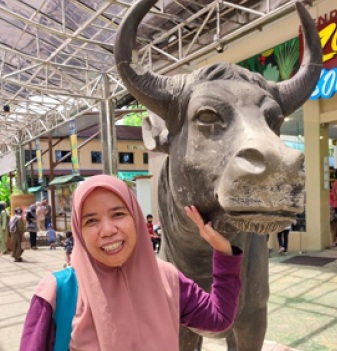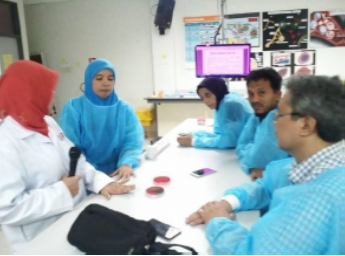Inside the Vet World Part II: Dr Siti on Livestock, Learning and Research

Munirah Ahmad Niza
October 16, 2025
For Dr Siti Zubaidah, every lesson taught and every animal cared for is part of a greater purpose: protecting lives, nurturing knowledge and shaping the future of public health.
- Vet school was tough but rewarding. Each challenge strengthened her resilience and love for animal science.
- Veterinary research supports national food security by improving livestock welfare and productivity.
- Her work bridges animal welfare, public health, and education, showing how veterinary science impacts society at every level.
For Assoc. Prof. Dr Siti Zubaidah Ramanoon, animals have always been more than just subjects of study; they’ve been a lifelong passion.
Now serving as an Associate Professor & former Head of the Dept of Farm and Exotic Animal Medicine at UPM, Dr Siti’s career spans from hands-on livestock care to groundbreaking research in antimicrobial resistance.
With a Doctor of Veterinary Medicine (DVM) from UPM, a Master of Science (MSc) from the University of Guelph, and a PhD from Murdoch University, she continues to inspire both the veterinary community and the next generation of animal health professionals.

We interviewed Dr Siti to learn more about her journey, her research and what drives her passion for teaching and animal welfare.
🐱Haven’t caught part 1 yet? Head over here and give it a read first!
1. First of all, what inspired you to choose veterinary medicine as your field of study?
My first memorable experience with animals was when I was around seven or eight years old. My family had two female cattle; we named one of them Kuntung.
She was used for transportation, but for me, she felt like my first pet. That early bond sparked something in me. I think that was the triggering moment that led me to pursue veterinary medicine.
2. Vet school is known to be tough. What was your journey like, and what lessons did you take away from it?
My journey definitely had its ups and downs. The first three years were especially challenging. Anatomy, for example, was one of the hardest subjects. So many bones, muscles, tendons, and vessels to memorise!
Then came small animal medicine in the third year, which was equally demanding. But despite the difficulties, I truly enjoyed the journey. Every challenge made me more resilient and deepened my understanding of animal science.
3. What are some misconceptions people often have about your job?
At the start of my career, people were often surprised to see a female vet handling large animals like cows or buffalo.
My first surgery case at UPM was on a buffalo calf with a hernia. Many expected a male vet to take on such cases, but once they (farmers) saw how we worked and communicated, they began to trust us.
I always say, “Small but mighty.” Size doesn’t matter. There’s always a method or technique to safely handle animals. I’ve also always been more comfortable with cows than cats, so that’s probably why my field leans toward livestock medicine.
4. You’re currently leading important research in livestock health. What discoveries are you most excited about right now?
Right now, I’m working on a project involving Carbapenem-resistant Enterobacteriaceae (CRE) in dairy cows. It’s part of the broader issue of antibiotic resistance, a growing global concern.
This isn’t just about animal health; it’s also a public health issue. Antimicrobial-resistant genes can transfer between animals and humans, so studying this helps us understand and mitigate those risks.

5. In your view, how does veterinary research help solve national or even global challenges?
Veterinary research plays a big role in national safety and food security. For example, our research helps farmers recognise problems like lameness in livestock, which can affect an animal’s health, milk yield and reproductive performance.
When we help farmers manage these issues, we’re not just improving animal welfare, we’re strengthening the livestock industry and, ultimately, contributing to national food security.
6. You’ve mentored countless vet students over the years. What gives you the greatest satisfaction as an educator?
Teaching gives me a real sense of achievement. I teach veterinary epidemiology, and it’s incredibly rewarding to see students apply what they learn to real-world problems.
When they understand how to use epidemiology to improve diagnosis accuracy, design research or analyse data, it feels like I’ve passed on something valuable.
Seeing them grow into confident veterinarians or researchers reminds me that my efforts have helped shape the future of animal health. That, to me, is the most fulfilling part of being an educator.
Through her work in teaching, research, and livestock medicine, Dr Siti exemplifies how veterinary science extends far beyond the clinic.



